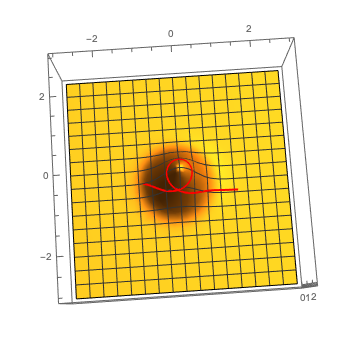Homework 12
1. (Geodesics are length extremizing). Recall the following facts
- Consider the space . If we equip with the flat metric, then it is well-known that every of two points has a unique geodesic connecting them.
- Consider the sphere , if we equip with the usual round metric, then every pair of two points (not antipodal pairs) has exactly two geodesics connecting them.
Here comes the question: we will equip with a metric as following where is a Guassian peak with radius and height . Answer the following question without doing computation:
- Let , . As , how many geodesics are there between and ?
- As , how does the amount of geodesics between and changes?
- Is it possible that for any finite , there are only finitely many geodesics between and ?
Here is a picture, and the Mathematica program to make that picture (FYI, you can use Mathematica for free as Berkeley student!) In the program, I fixed the initial point, and varies shooting angle, and the peak height.

And here is a video:
2. Let be the submanifold of , that arises as the graph of . Compute the second fundamental form of at .
3. Let be a compact Lie group with a bi-invariant metric $\la -,- \ra$. Let be left-invariant vector fields. (try to do it yourself before checking Example 4.2.11 in [Ni]). Show that
4. (Cartan 3-form). Same setup as 3. There is -form on , satisfying $$B(X, Y, Z) = \la [X, Y], Z \ra. $$ Show that this form is closed. In the case , can you recognize this -form as something familiar?
Hint: use the invariant formula for exterior derivative, and plug in the left-invariant vector fields.
5. (Normal Coordinate.) Ex 4.1.43. Hint: choose nice coordinate and nice basis.

